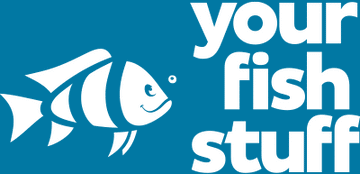Hatching Brine Shrimp Eggs

Instructions and Guidelines
Storing Brine Shrimp Eggs
Brine shrimp eggs should to be stored as follows:
- free from moisture; and
- in a cool environment at or below 50°F.
Hatching Environment
Follow these guidelines for the best results:
-
Salinity:
Approximately 11/2 tablespoons of salt per quart (or liter) of water. This equates to about 1.018 specific gravity as measured with a hydrometer. Aquarium, sea or non-iodized table salt can be used. -
pH:
Proper pH is important in hatching brine shrimp. A starting pH of 8.0 or higher is recommended. If the pH of your water is below 7, Epson salt or baking soda can be added at the rate of 1/2 teaspoon per quart. -
Temperature:
Optimum water temperature for a 24-hour complete hatch is 80-82°F. Lower temperature will result in a longer hatching time, but do not exceed 86°F. -
Light:
Illumination can be added to get the best hatching rate, but is not absolutely critical. -
Aeration:
Constant aeration is necessary to keep cysts in suspension and to provide sufficient oxygen levels for the cysts to hatch. A nice steady stream of aeration that tumbles the eggs without pushing them above the water surface and onto the side of the hatching cone.
-
Stocking Density:
1 gram per liter or quart or approximately 1/2 level teaspoon of cysts per quart is recommended. A higher stocking density will result in a lower hatch percentage. -
Hatching Cone:
Flat-bottom hatching vessels should be avoided. Cone or "V" bottomed containers are best to insure that the cysts remain in suspension during hatching. Be sure to thoroughly wash the hatching cone with a light chlorine solution, rinse, and allow to air-dry between uses.
Hatching Procedure
The following steps will achieve optimum brine shrimp egg hatch rates.
|
What are the guidelines for Artemia cysts?
Salinity - 20 - 30 parts per thousand (ppt) salt solution or approximately 1-2 tablespoons of rock salt per quart (or liter) of water. This equates to around 1.015-1.020 specific gravity. A 20% (or around 1/2 teaspoon per quart) concentration of Epson salt or magnesium sulfate can be added to further buffer the hatching solution. Temperature - Optimum temperature for a 24 hour complete hatch 26-28° C. Lowering the temperature would result in a longer hatching time. Do not exceed 30°C. Light - Illumination is necessary to trigger the hatching mechanism within the embryo within the first few hours of incubation. Maintaining a light source during the entire incubation period is recommended to obtain optimum hatch results and for temperature control. Aeration - Constant aeration is also necessary to provide sufficient oxygen levels for the cysts to metabolize and hatch. A minimum of 3 parts per million dissolved oxygen during the incubation is recommended. Strong aeration will not damage or hurt the brine shrimp cysts or nauplii. pH - A starting pH of 8.0 or higher is recommended. If pH drops below 7.5 during incubation, add a teaspoon of sodium bicarbonate or a pH buffer to raise it above 8.0. Stocking Density - 2 grams per quart or approximately one level teaspoon of cysts per quart is recommended. A higher stocking density will result in a lower % hatch. Hatching Cone - Flat bottom hatching vessels should be avoided. Cone or "V" bottomed containers are best to insure that the cysts remain in suspension during hatching. Be sure to thoroughly wash the hatching cone with soap and water and allow to air dry between uses.
How do I harvest the baby brine shrimp?
To harvest the baby brine shrimp or nauplii, simply shut off the air and wait a few minutes for the shells and nauplii to separate. The shells will float to the surface and the live nauplii will go to the bottom of the cone towards the light source. Once separated, the nauplii can be siphoned from the bottom or drained from the bottom of the cone through the air tubing.
